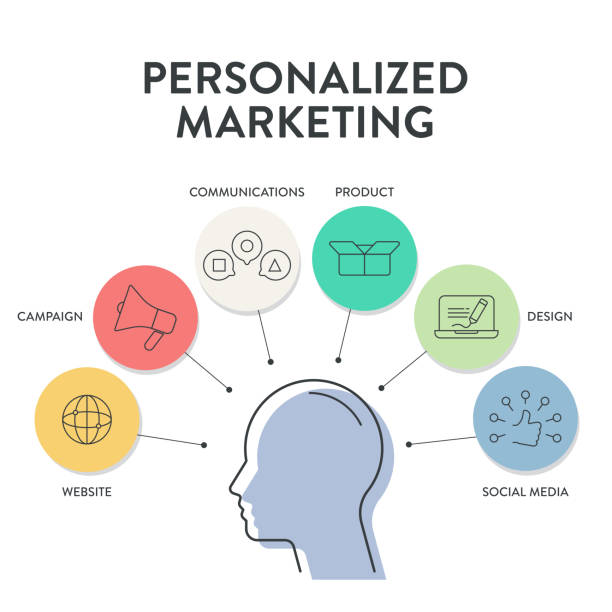Introduction
Let’s face it—everyone wants to feel special. Whether it’s getting your name on your coffee cup or finding exactly what you need on Google without even typing it all out. That’s the magic of personalisation for Google and it’s not just cool tech; it’s a business game-changer.
In this guide, we’re diving into how Revive Online powers up digital marketing using clever, strategic personalisation on Google. From smarter ads to content that hits the mark every time, these tactics don’t just sound good—they work. So let’s talk about how to make Google feel like it’s working just for you.
Why Personalisation for Google Is a Game-Changer
You know that feeling when you search something, and Google seems to read your mind? That’s no accident. That’s Google search personalisation at work.
When businesses tailor their content to match user behavior, location, and preferences, they don’t just increase visibility—they connect. Think of it as upgrading from a megaphone to a laser-focused message that reaches the right people, at the right time.
Benefits of Personalisation for Google
- Higher engagement: Users are more likely to click when it feels relevant.
- Better conversions: Content that matches intent leads to action.
- Increased loyalty: Personalised experiences create better brand recall.
How Google Personalisation Works
Google personalisation uses a mix of machine learning, search history, location data, and user behavior to deliver more relevant results. It’s like having a digital assistant who remembers everything you like.
Here’s a simple breakdown:
1. Search History
Google tracks what you’ve searched before to serve better results next time. If you often look for vegan recipes, it’ll prioritize those in future food-related searches.
2. Location-Based Results
Where you are affects what you see. “Pizza near me” in London won’t show you New York listings.
3. Device & Language Preferences
Google adapts based on your device type (mobile vs desktop) and preferred language, fine-tuning how content is shown.
This type of targeting is gold for marketers. It allows customised Google content that feels like it’s built for the user—and that’s powerful.
Core Strategies That Make Personalisation Effective
Let’s get to the good stuff—how you can actually use personalisation for Google to boost your brand.
1. Optimise for Intent, Not Just Keywords
Forget the keyword stuffing days. Google’s all about user intent now. Ask yourself: What is the user really looking for? Then, build content that solves that.
Example:
Instead of targeting “best headphones,” go for:
- “best noise-cancelling headphones for travel”
- “budget Bluetooth headphones under $50”
These long-tail queries reflect intent and help Google serve up your content to the right people.
2. Use Dynamic Content
With platforms like WordPress and tools like Elementor, you can serve different content based on user behavior, location, or even referral source.
3. Leverage Google Ads Audience Segments
With Google Ads, target based on:
- In-market behavior
- Affinity interests
- Custom intent
- Remarketing lists
This is where Google user targeting becomes extremely precise.
Personalisation in Action: Tools and Tactics
Let’s explore some of the most effective tools you can use to personalise your Google strategy:
| Tool | What It Does |
|---|---|
| Google Analytics 4 | Understand user behavior across devices and channels |
| Google Search Console | Monitor personalised search performance |
| Google Ads | Run hyper-targeted campaigns using audience data |
| Hotjar | Track on-site behavior for content personalisation |
| SEMrush/Surfer SEO | Craft content that aligns with search intent |
Now here’s a more strategic breakdown:
| Personalisation Tactic | How It Works |
|---|---|
| Location-based targeting | Customises content or ads by user location for better relevance |
| Behavioral segmentation | Groups users by site actions, enabling tailored follow-up |
| Retargeting via Google Ads | Serves personalised ads to people who’ve visited your site before |
| Dynamic search ads | Auto-generates ads based on user queries and your website content |
The Revive Online Approach to Personalised Google Success
We at Revive Online aren’t just tossing around buzzwords. We take a structured, results-driven approach to Google personalisation. Here’s how we do it:
Step 1: Data-Driven Discovery
We start with deep analytics to uncover your audience’s behavior, preferences, and pain points.
Step 2: Intent-Focused Content Creation
We write for real people—not bots. But we keep Google’s AI in mind, crafting content that matches what your audience is searching for.
Step 3: Personalised Ad Campaigns
From custom audience lists to geo-specific creatives, we run ads that feel like they were meant to be.
Step 4: Ongoing Optimisation
This isn’t a “set it and forget it” deal. We refine and adjust based on what the data tells us.
Data: The Heart of Personalisation
All good personalisation starts with great data. Without it, you’re just guessing.
Here’s what to focus on:
1. Demographics
Who is your audience? Age, gender, location—all of it matters.
2. Behavior Flow
What pages do users visit first? Where do they drop off? What content keeps them hooked?
3. Source Attribution
Did they come from a social post? An email? A Google ad? Knowing this helps you personalise the next touchpoint.
The more detailed your data, the better your Google personalisation strategy becomes.
Common Mistakes to Avoid
Let’s be real—not all personalisation is done right. Here are a few landmines:
1. Over-Personalising
Ever felt creeped out by an ad that knew too much? Don’t cross that line.
2. Ignoring Mobile Users
If your personalisation isn’t mobile-friendly, you’re losing half your audience—maybe more.
3. Forgetting Fresh Content
Personalised content still needs to be current. Update regularly to stay relevant.
Future-Proofing with Google Personalisation
Google’s only going to get smarter. AI is evolving. Voice search is growing. Contextual and predictive personalisation will become the norm.
Emerging Trends
- AI-generated dynamic landing pages
- Cross-device personalization
- Deeper integration with Google Assistant and voice search
Start adapting now, and you’ll be miles ahead when these changes go mainstream.
Conclusion
Here’s the bottom line: Personalisation for Google isn’t just a nice-to-have—it’s a must-have. If you want your content, ads, and brand to matter in a crowded digital world, you’ve got to get personal.
At Revive Online, we’re passionate about helping brands create digital experiences that feel like a conversation—not a broadcast. If you’re ready to stop shouting into the void and start speaking directly to the people who matter, personalisation is the way forward.
And Google? It’s your smartest ally—if you use it right.
FAQs
1. How does Google personalise search results?
Google uses your location, past searches, device type, and behavior to tailor results that best match your needs.
2. Is personalisation for Google only useful for big brands?
Not at all. Even small businesses can benefit by targeting local customers or niche markets through personalised strategies.
3. What tools do I need to personalise my Google content?
Start with Google Analytics, Google Ads, and Search Console. Tools like Hotjar and Surfer SEO can help refine content even more.
4. How can Revive Online help with personalisation?
We offer strategy, content creation, ad targeting, and ongoing optimisation—all tailored to your audience using the latest in Google personalisation.
5. Does personalisation affect SEO rankings?
Yes. More relevant, personalised content often performs better in organic rankings and leads to higher engagement.


